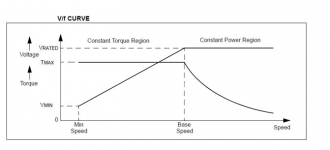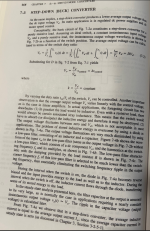Suppose I have a motor that when ran at 60HZ its full load current is 100A. The motor is fed by a flux vector drive. The load is a constant torque load.
The input to the drive would be something on the order of Iout x Drive input PF. Say the input to the drive had a pf of 0.95, then the current input to the drive is 95A.
The drive makes up 98% of the load in the distribution system. So I assume that the current at the service will be more or less 100A, factoring in some current for some other misc loads.
Now suppose I run that motor at a maximum Hz of 30hz. This being a constant torque load my torque will be the same so my torque producing current will be the same. I assume my magnetizing current will change a bit due to the change in impedances at the lower frequency. My overall current should be more or less 100A at the output. Perhaps a little higher since my inductance will be slightly higher.
Again I assume that my input to my drive would be around 0.95 of the output current and I should assume that my service current largely stays the same.
Am I getting all of the above correct?
The input to the drive would be something on the order of Iout x Drive input PF. Say the input to the drive had a pf of 0.95, then the current input to the drive is 95A.
The drive makes up 98% of the load in the distribution system. So I assume that the current at the service will be more or less 100A, factoring in some current for some other misc loads.
Now suppose I run that motor at a maximum Hz of 30hz. This being a constant torque load my torque will be the same so my torque producing current will be the same. I assume my magnetizing current will change a bit due to the change in impedances at the lower frequency. My overall current should be more or less 100A at the output. Perhaps a little higher since my inductance will be slightly higher.
Again I assume that my input to my drive would be around 0.95 of the output current and I should assume that my service current largely stays the same.
Am I getting all of the above correct?



